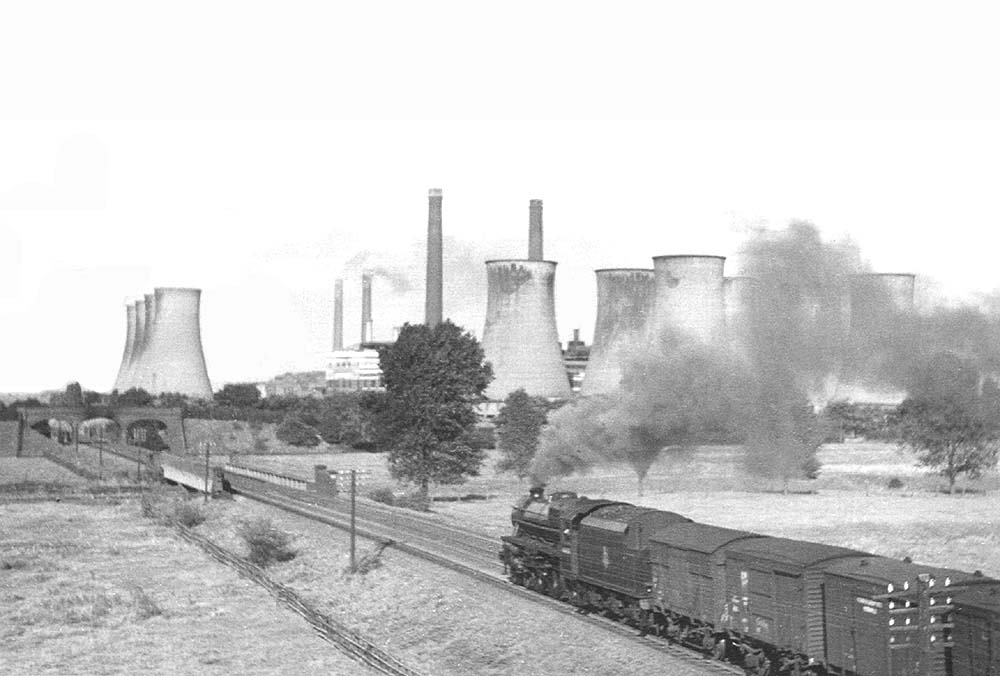 |
|
London North Western
Railway:

Midland
Railway:

Stratford
Midland Junction Railway
|

|
LMS Route: Birmingham New Street to Nuneaton
Water Orton Station: mrwo1052
 |
An unidentified ex-LMS 'Black Five' is seen on a fitted
freight heading North on the fast line to Kingsbury Station on 1st September
1952. Hams Hall Power Station, a series of three, now demolished coal-fired
power stations, situated 9 miles (14 km) from Birmingham was located in between
the 1909 fast lines and the original 1844 B&DJR lines now serving as the
goods lines. Coal for the power station was brought in by rail via the goods
line. The first power station built at Hams Hall, later designated 'A', was
constructed on the site in 1928. It opened in 1929 with a generating capacity
of 90,000 kilowatts (kW). This was increased to 240,000 kW. The station burned
approximately 774,000 tonnes of coal a year. At the time it was one of the
largest power stations in Europe. The station was also the first power station
in the United Kingdom to burn pulverised coal, rather than lumps of coal. It
was also used as a prototype site for the installation of gas turbines in
coal-fired plants. Water for the station was cooled by six reinforced concrete
hyperbolic cooling towers. At the time, these were the largest cooling towers
ever built. The station had two 350 feet (110 m) tall chimneys. The station's
closure was announced in 1975, following a fall in electricity consumption. By
the time of its closure its generating capacity had fallen to 151 MW. The
station's chimneys and cooling towers were demolished in 1978.
 back back

|
